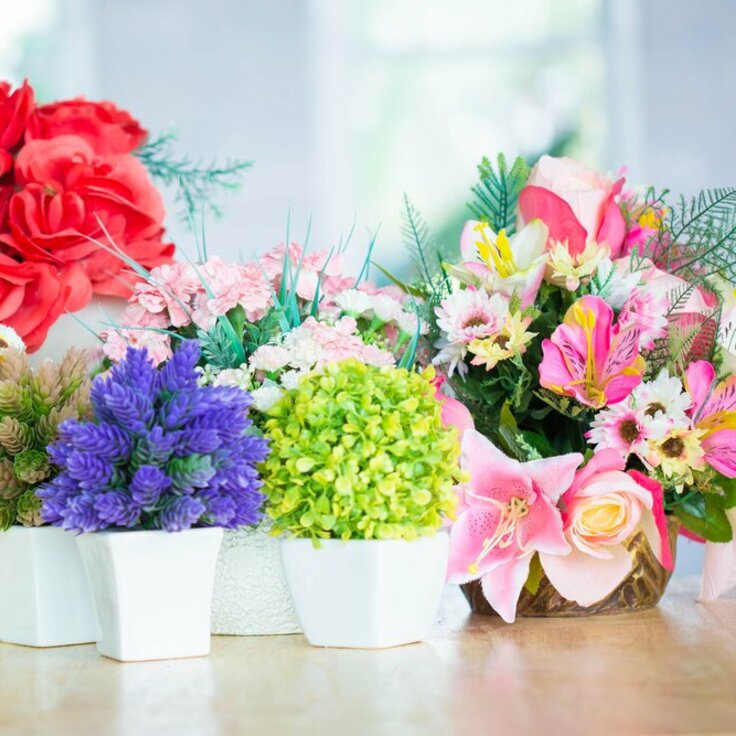The Houseplants You Shouldn’t Keep if You Have Pets
Who doesn’t love a houseplant? They make a house a home in the best way; they bring the outside in and can even improve air quality – not to mention represent the perfect conversation starters for guests who are just starting to sip their tea.
Trouble is, pet owners need to be cautious about the types of greenery they bring into their homes; some can pose a danger to furry friends, from causing mild stomach upsets to much worse. Even if they are fine for humans, they can be very bad for dogs, cats, and other house-dwelling quadrupeds.
- The Spider
This is a classic of the green thumb world. It’s easy to care for, fun to look at, and particularly good at removing contaminants from the room. There’s recently been a rise in gamers looking into acquiring one, since they’re pretty adept at taking excess carbon monoxide – a lesser-known by-product of running popular gaming consoles – from the air. With a spider plant, you can be playing any game you want without constantly side-eyeing your CO detector.
Unfortunately, they can cause mild gastrointestinal problems for cats who fancy a nibble. Most cats won’t be interested in complementing their kibble with a salad, but, if your cat is more adventurous than most, avoid this one and opt for opening a window instead.
- Lilies
They are extremely toxic to cats, especially members of the Lilium and Hemerocallis genera. Even ingesting a small amount of any part of the leaves or flowers, including the petals, leaves, or pollen, can lead to severe kidney damage and even death in cats. Therefore, it's crucial for cat owners to keep lilies out of their homes or gardens.
- Sago Palm
Dogs and cats should avoid Sago Palm. All parts of the plant are highly toxic to our furry buddies. Cycasin, a toxin that can cause severe liver failure and neurological damage, is what’ll do the damage. Even a small nibble on the leaves or seeds can be fatal to pets.
- Dieffenbachia
Calcium oxalate crystals are found in the leaves of Dieffenbachia, and these can cause intense burning and irritation in the mouth and throat if your pets get hold of the plant. Symptoms of Dieffenbachia poisoning in pets include drooling, difficulty swallowing, and vomiting.
- Philodendron
While they are relatively easy to care for, philodendrons contain calcium oxalate crystals similar to Dieffenbachia, making them toxic to pets if ingested. Symptoms of philodendron poisoning in pets include oral irritation, drooling, and difficulty swallowing.
- Peace Lily
Peace Lilies contain calcium oxalate crystals like Dieffenbachia and philodendrons, making them toxic to pets if chewed or ingested. Ingestion of peace lily leaves can cause oral irritation, excessive drooling, vomiting, and difficulty swallowing.
- Aloe Vera
While aloe vera is safe for topical use on humans, it can be toxic to pets if ingested. The latex found in aloe vera leaves can cause vomiting, diarrhoea, and tremors in dogs and cats. Therefore, pet owners should keep aloe vera out of reach of curious pets.
- Pothos
Pothos contains calcium oxalate crystals like other items on this list, making it toxic to pets if ingested. Symptoms of pothos poisoning in pets include oral irritation, excessive drooling, and difficulty swallowing.
It goes without saying that, if you suspect your pet has ingested a toxic plant, it's crucial to seek immediate veterinary care to prevent serious complications. Nobody wants to think of their furry friend unwittingly stumbling into a booby trap, even if it is one as pretty as a peace lily.
Also, it may be worth getting familiar with what these plants look like. While it’s easy enough to keep them out of your home, you never know when you’ll walk your pooch into a friend’s house filled to the prin with Spiders, Aloe, Pothos and Lilies.








